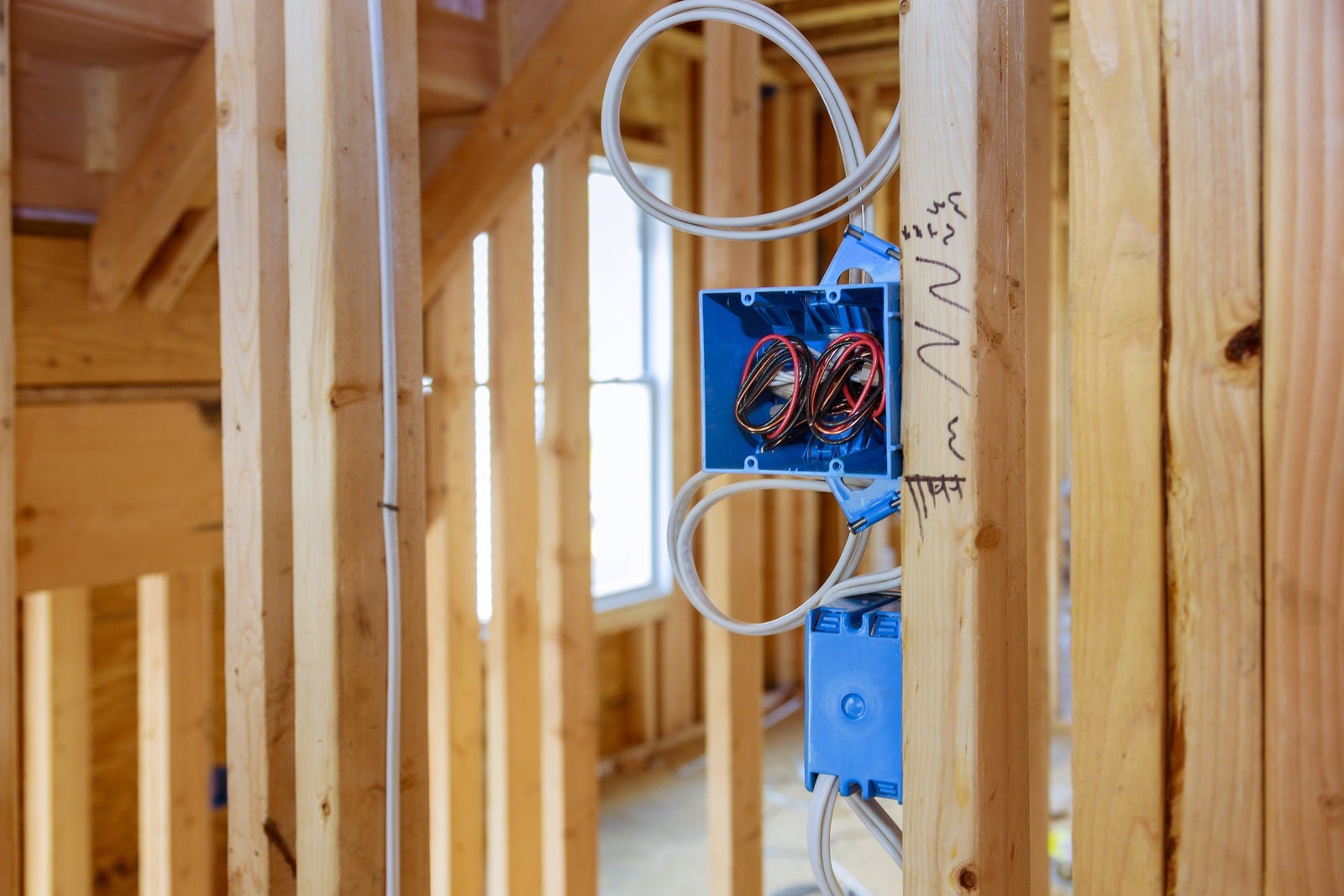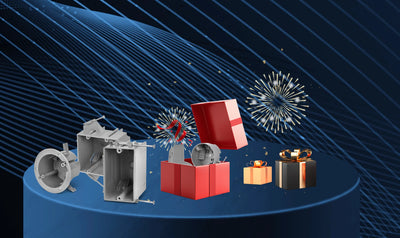Table of Contents
Introduction

Why is it important to know the capacity of junction boxes?
At Togalonn, we are aware that electrical safety depends on the junction box's capability. Filling up too much can result in:
a) Dangerous overheating (up to 194°F/90°C in overloaded boxes)
b) 30% increased fire risk according to NFPA studies
c) Failed inspections and costly rework
d) Reduced system lifespan due to wire degradation
The role and significance of junction boxes
As a leading US junction box manufacturer, we design our boxes to provide:
a) Safety containment for sparks and heat
b) Physical protection against impacts and moisture
c) Code-compliant organization meeting NEC 314.16 standards
d) Easy maintenance access for future service needs

What is a Standard Junction Box?
Basic definition of a junction box
Standard junction boxes are used in both residential and commercial electrical wiring systems; they come in a variety of sizes and designs, but the most popular sizes are 4-inch square or round boxes. The purpose of a junction box is to provide a secure electrical link and protect electrical connections. Knowing the size of the junction box is essential to figuring out its capacity.
Junction Box Sizes and Capacity
Standard junction boxes come in different sizes, but the most common ones include:
4" x 4" square junction box: This is the most common size for residential installations.
4" round junction box: Typically used for specific installations, such as for light fixtures or switches.
Junction Box Size |
Description |
| 4" x 4" Square Junction Box | The most common size for residential installations. |
| 4" Round Junction Box | Typically used for specific installations, such as for light fixtures or switches. |
The amount of space inside each junction box and the maximum number of wires it can securely accommodate determine its capacity.
Factors Affecting Junction Box Capacity

Wire Size and Type
The number of wires that can fit in a junction box depends on the wire's size, type, and insulation. For instance, thinner wires (like 14 AWG) can fit more readily, but thicker wires (like 12 AWG or 10 AWG) need more room.
Number of Wires and Wiring Methods
The amount of space that the wires take up in the junction box depends on their number. For example, additional space is required when several wires are joined together in order to provide safe and appropriate contact.
Junction Box Design
More wires can be inserted in certain junction boxes because of their larger capacity. The installation environment and purpose should be taken into consideration while choosing the right box.
Safety Standards and Regulations
Minimum wiring spacing requirements are outlined in safety regulations such as the National Electrical Code (NEC), which help avoid overheating and other safety risks brought on by packing the box too full.

How Many Wires Can a Standard Junction Box Hold?
Junction boxes have a limited capacity, and filling them to the brim could result in an electrical fire. NEC standards state that common junction boxes typically have the following capacities:
| Box Size | #14 Wires | #12 Wires | #10 Wires |
| 18 cu. in. | 9 | 8 | 7 |
| 21 cu. in. | 10 | 9 | 8 |
| 30 cu. in. | 15 | 14 | 12 |
Standard vs. larger boxes
Standard (18-21 cu. in.): Ideal for:
Single light fixtures
Basic outlet connections
Deep (30+ cu. in.): Recommended for:
Smart home devices
GFCI installations
Multi-circuit junctions
Practical limitations
Even when mathematically compliant:
a) Leave 15% air space for heat dissipation
b) Ensure wires can be properly bent (NEC 314.28)
c) Consider future expansion needs
How to Choose the Right Junction Box?
When selecting a junction box, consider the following factors:
a) Number of wires: Choose a junction box based on the number of wires you plan to install.
b) Wire size: Thicker wires require more space.
c) Wiring method: Some wiring methods take up more space to prevent wires from rubbing against each other or getting damaged.
d) Safety regulations: Ensure that the junction box complies with safety standards like the NEC.
Common mistakes to avoid
❌ Miscounting devices (each counts as 2 wires)
✅ Togalonn Solution: Our boxes include fill calculators
❌ Ignoring clamp space
✅ Togalonn Advantage: Pre-installed non-fill clamps
❌ Mixing incompatible wires
✅ Our Recommendation: Use our color-coded dividers

Tips and Precautions
Wire Combination Recommendations
Make sure there is adequate room between wires when utilizing several in the same junction box. Wires should not be squeezed too firmly.
To avoid cables inside the box interfering with one another, use the proper connectors and wire holders.
How to Avoid Overfilling a Junction Box
Keep the junction box from being overfilled. The likelihood of heat accumulation, which can result in overheating and even flames, is increased by overfilling.
Safety Tips for Securing Wire Connections
Make sure there is adequate room between wires when utilizing several in the same junction box. Wires should not be squeezed too firmly.
To avoid cables inside the box interfering with one another, use the proper connectors and wire holders.
Conclusion
For your electrical system to be safe and functioning, selecting the appropriate junction box is crucial. Numerous factors, including wire size, number of wires, box design, and safety standards, affect how many wires a junction box can accommodate. In order to preserve a safe electrical environment, it is imperative that the box not be overfilled.
Always calculate box fill per NEC 314.16
Choose boxes with 20% extra capacity
Togalonn boxes simplify compliance with:
a) Clear fill markings
b) Integrated calculators
c) Optimized designs
d) UL-Listed
The importance of choosing the appropriate junction box
The right junction box ensures:
✔️ Safety - Prevents 83% of connection-related fires
✔️ Compliance - Meets all US electrical codes
✔️ Durability - Our boxes last 2x industry average

